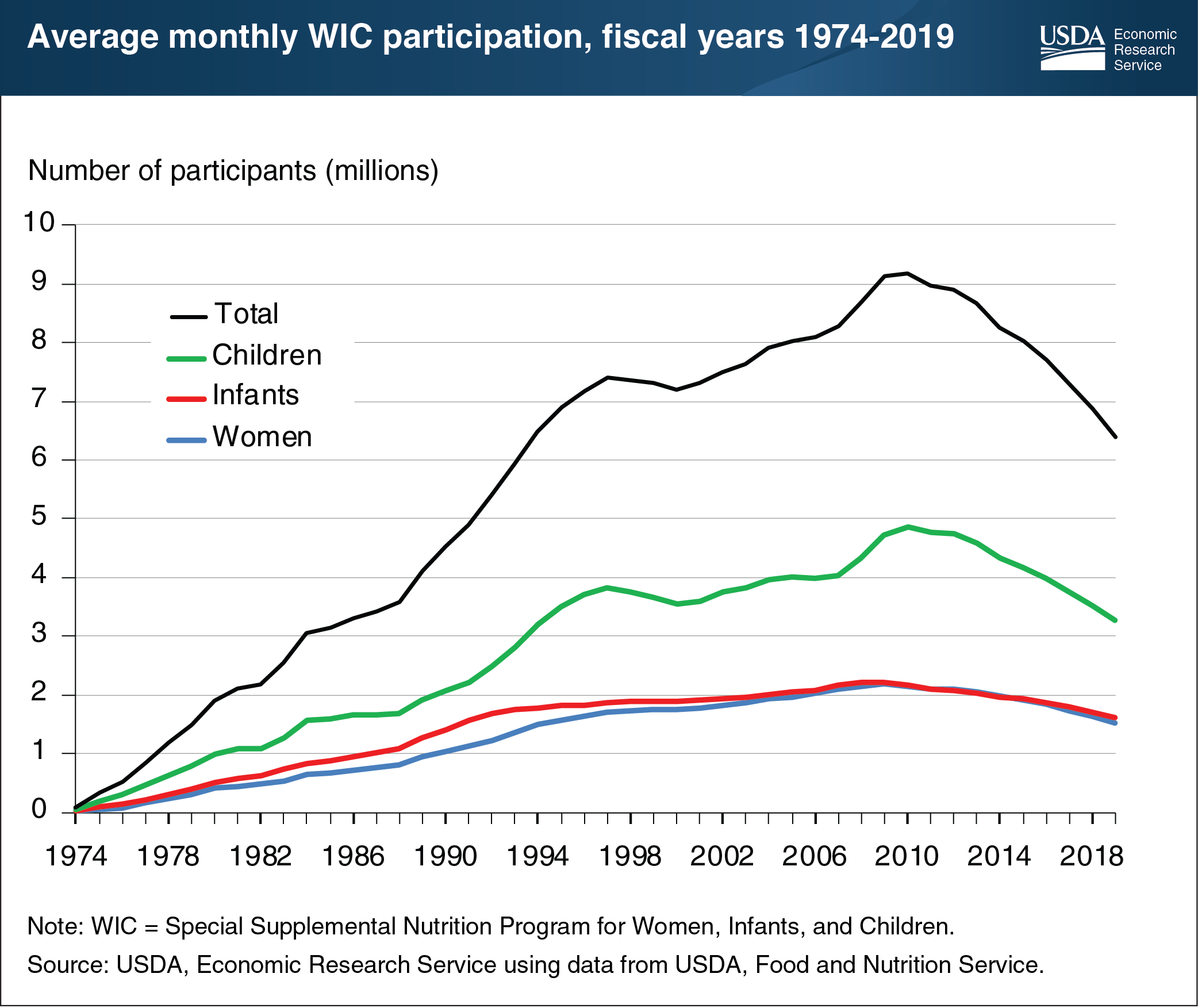WIC participation fell by 30 percent between fiscal years 2010 and 2019
- by Laura Tiehen
- 11/6/2020

USDA’s Special Supplemental Nutrition Program for Women, Infants, and Children (WIC) helps to safeguard the health of low-income pregnant, breastfeeding, and postpartum women, as well as infants and children up to age 5 who are at nutritional risk by providing supplemental foods, nutrition education, and health care referrals at no cost to participants. On average, 6.4 million people per month participated in the program in fiscal year 2019, 7 percent fewer than in the previous fiscal year and a 30-percent drop from the program’s historical high of 9.2 million participants in fiscal year 2010. The number of WIC participants in each category—women, infants, and children—fell by 6-7 percent between fiscal years 2018 and 2019. This marked the ninth year in the program’s history that participation for all three groups fell. Declining U.S. births and improving economic conditions have likely played a role in the falling WIC caseloads. In fiscal year 2019, children 1-4 years of age made up 51 percent of all participants, while infants constituted 25 percent and women constituted 24 percent. The data in this chart pre-dates the COVID-19 pandemic and its impact on WIC participation. This chart appears in the Economic Research Service publication, The Food Assistance Landscape: Fiscal Year 2019 Annual Report, July 2020.


